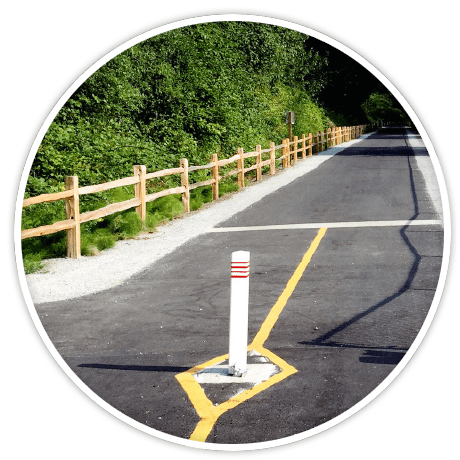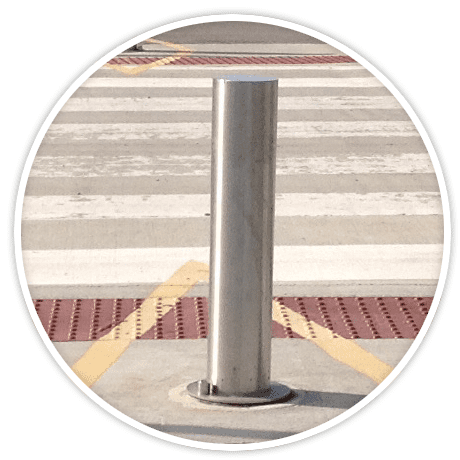
Bollards pose a significant risk to bicyclists and should be used only where they are absolutely necessary.
Bollards are to be used at intersection nodes, in areas where vehicular access is a concern, or where clarification is needed to avoid vehicular conflict. Transition in paving material and signage are preferred deterrents over bollards.
- Bollards are challenging from a maintenance standpoint and pose a collision risk to trail users.
- Center bollard should be collapsible to permit maintenance access.
- Bollards should be embedded in concrete base, not surface mounted.
- Bollards should be high-contrast color and highly reflective. Black bollards may be used, but must have highly reflective striping, see bollard selections below. While decorative bollards may be desirable design elements, decorative bollards should only be used at trailheads or amenity locations where bicyclist will not interact with them while traveling at speed.
- Bollards to have universal locking mechanism (pad lock) not specialty key system and should be collapsible whenever possible, not removable.
- Any bollard configurations shall use a minimum 6′-0″ spacing between bollards to prevent vehicular access.
 Collapsible Bollard |
 High Contrast Bollard |
 Stainless Steel Bollard |
On-Trail Bollard Layout

Trailhead Bollard Layout

COMPONENTS: Click below for more information on each component.
